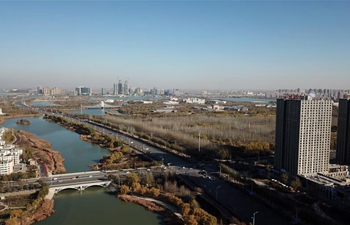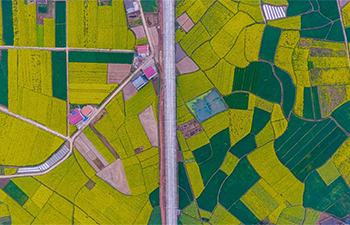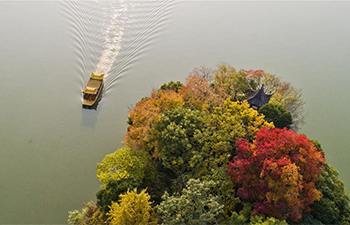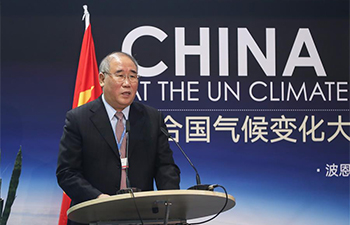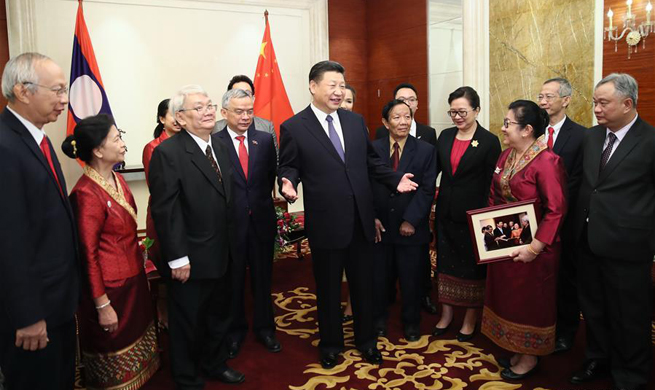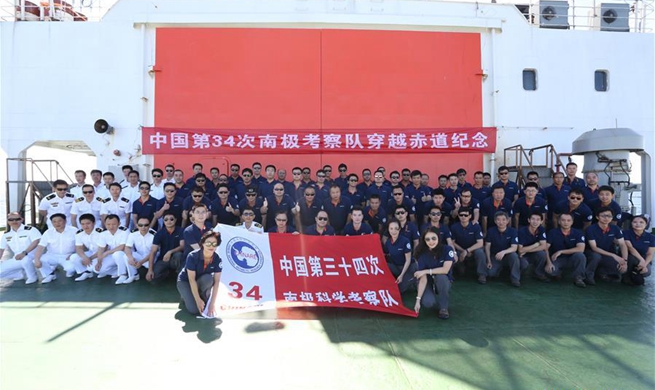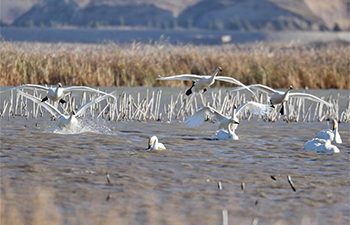BEIJING, Nov. 16 (Xinhua) -- China has listed natural gas hydrate, or combustible ice, as the country's 173rd mineral variety, to speed up exploitation of the clean energy source.
The Ministry of Land and Resources (MLR) filed an application with the State Council, China's cabinet, last month to include the resource in China's mineral list. The application was approved on Nov. 3, Ju Jianhua, head of the MLR mineral reserves department, told a press conference Thursday.
The application was made in response to a request in May from the central leadership to promote industrialization of natural gas hydrate after trial mining in the South China Sea.
WHAT IS COMBUSTIBLE ICE?
Natural gas hydrate usually exists in the seabed or permafrost areas. It is composed of natural gas and water under high pressure at low temperature. It resembles ice and can be ignited like solid ethanol, hence the name "combustible ice."
Natural gas from the combustible ice can be used for the same purposes as regular natural gas. With a high density of energy, it is a clean and efficient energy source.
Besides China, the United States, Japan and Canada are also mining the resource, Ju said.
Preliminary estimates show China's reserves of combustible ice under the sea are about 80 billion tonnes of oil equivalent, said Wang Kun, deputy head of the China geological survey bureau.
Combustible ice has different chemical and physical properties from regular natural gas, coalbed gas and shale gas, and requires different storage, exploration and mining technology, Ju said.
LISTED, AND SO WHAT?
Combustible ice will reduce China's reliance on oil and gas imports and improve its energy and resource security, Ju said.
After legal recognition, capital will be encouraged into the exploitation of the resource to speed up industrialization, according to Ju.
Research will be stepped up, driving the development of related industries including equipment manufacture, pipeline construction and shipbuilding, he added.
The MLR will work on long-term strategic planning and fundamental research, with improved management, tax breaks and subsidies to develop mining techniques and equipment that meet China's needs.
"Trial mining is just the first step on a long journey. Industrialization faces challenges in terms of output, cost and protection of the environment," said Wang.
Exploration should aim to find up to four large resource bases as a foundation for industrialization, Wang said.
Environmental protection is crucial to the process and demands close monitoring of the marine environment and the right technology for green exploitation, Wang said.
RESEARCH AND TRIAL MINING
-- 1999. China started surveying natural gas hydrate and found the resource under the Xisha trough in the South China Sea.
-- 2002. Evaluation of combustible ice in key permafrost areas in western and northeastern China began.
-- 2007. Gas hydrate samples were collected under the Shenhu area of the South China Sea.
-- 2008. The first sample of combustible ice from the ground was collected from permafrost in the Qilian Mountains, Qinghai Province. The mineral was found several more times in the area between 2009 and 2015.
-- 2013. Samples of different types of combustible ice were collected in the northern part of the South China Sea.
-- 2014. Preparation for trial mining began with an underwater pilot project.
-- May 10, 2017. A 60-day mining trial began in Shenhu. And 309,000 cubic meters of natural gas had been extracted in the trial mining.




